21+ Sample Event Schedule
-
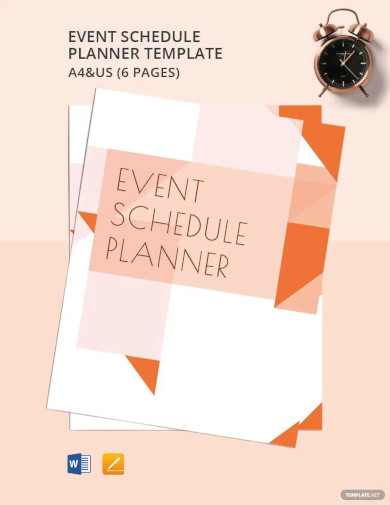
Event Schedule Planner
download now -
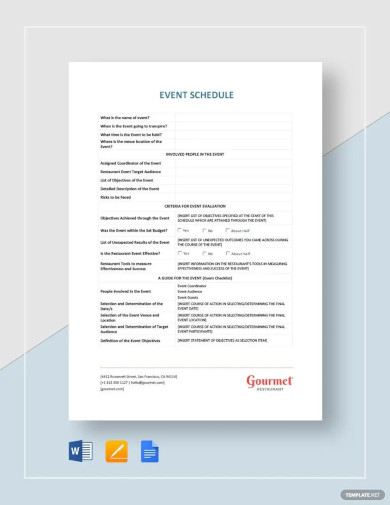
Event Program-Schedule
download now -
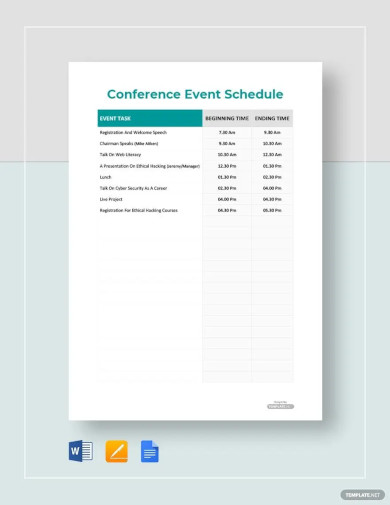
Conference Event Schedule
download now -
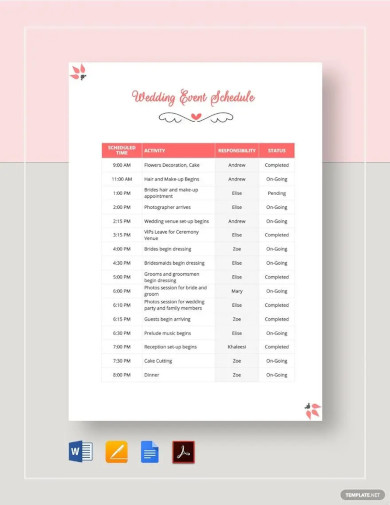
Wedding Event Schedule
download now -
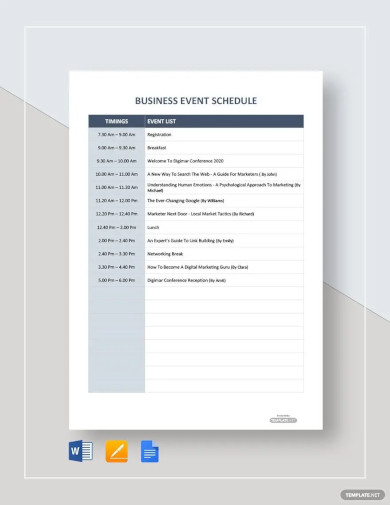
Business Event Schedule
download now -
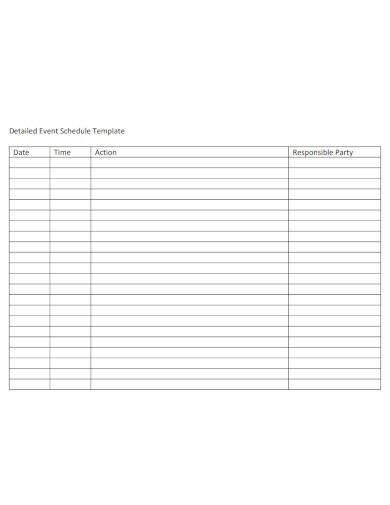
Detailed Event Schedule
download now -
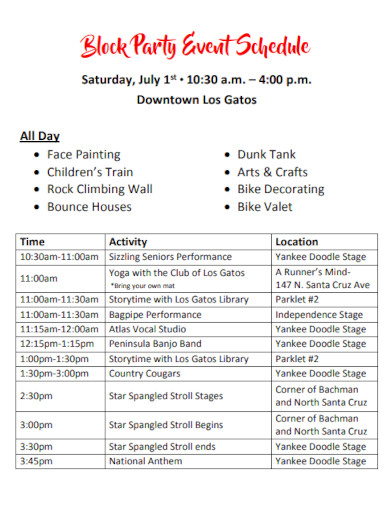
Party Event Schedule
download now -
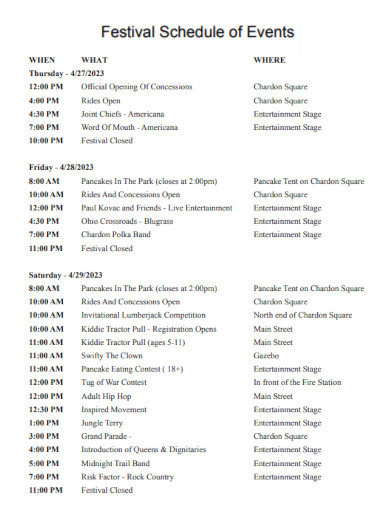
Festival Schedule of Events
download now -

Schedule of Creative Events
download now -
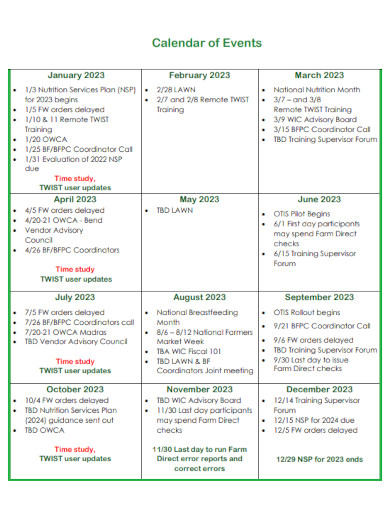
Calendar of Events Schedule
download now -
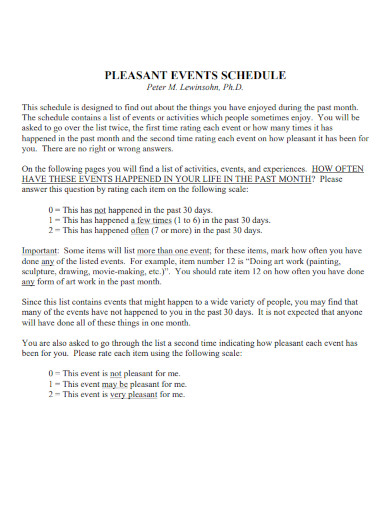
Pleasant Events Schedule
download now -
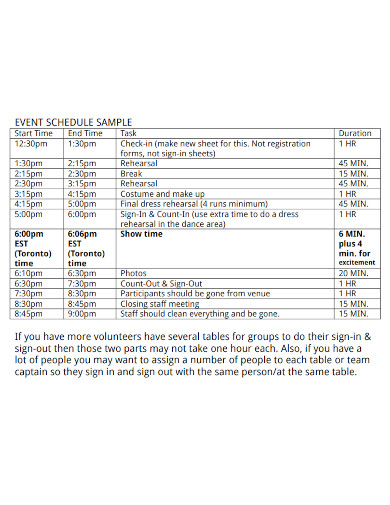
Event Schedule Chart
download now -
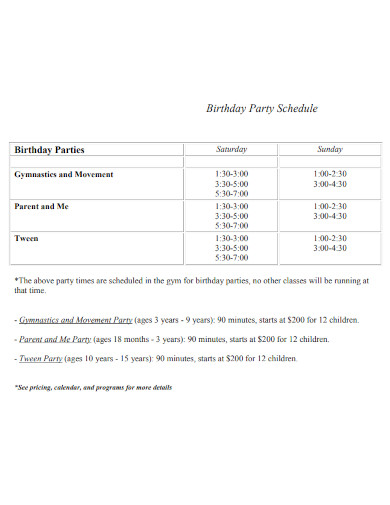
Birthday Event Party Schedule
download now -

Special Event Schedule Layout
download now -
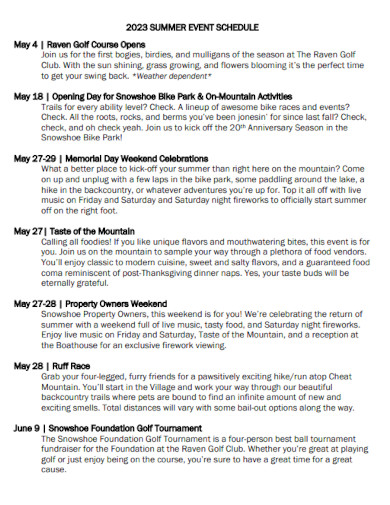
Summer Event Schedule
download now -
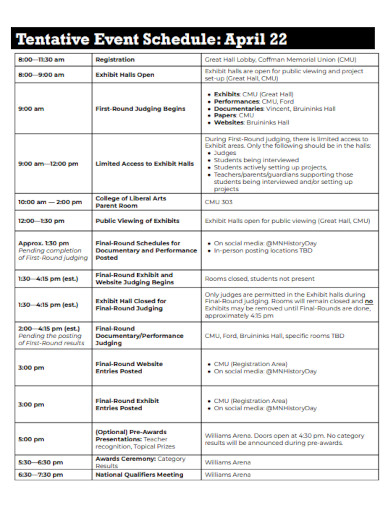
Tentative Event Schedule
download now -
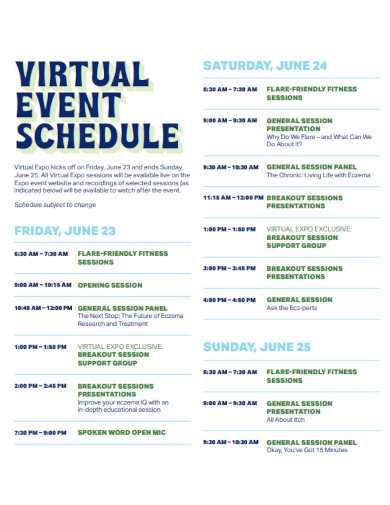
Virtual Event Schedule
download now -
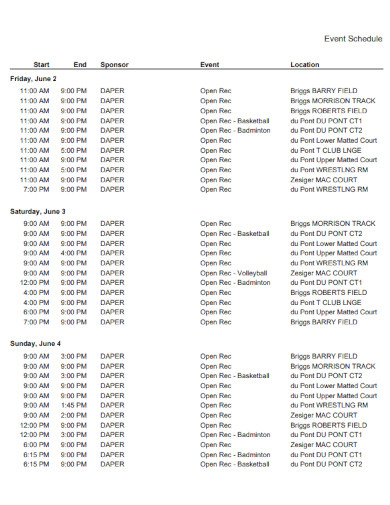
Sample Event Schedule
download now -
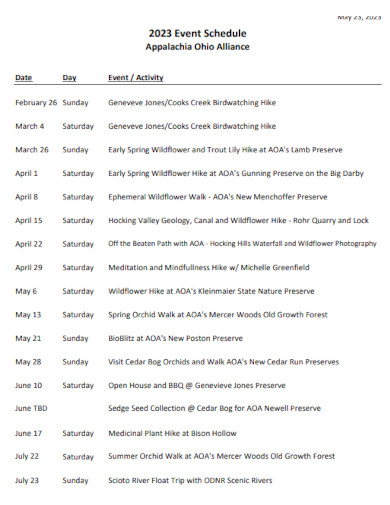
Modern Event Schedule
download now -

Meeting & Event Schedule
download now -
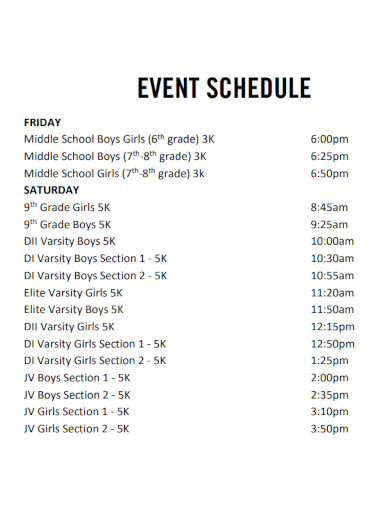
Printable Event Schedule
download now -
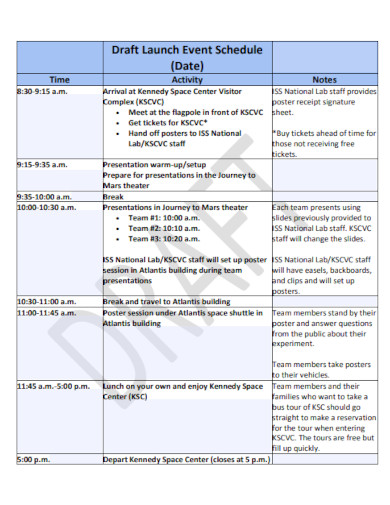
Dinner Event Schedule
download now
What Is an Event?
An event is a prearranged social gathering or occasion organized by an individual or group to commemorate a particular occurrence or share that moment with others. We have a lengthy lifespan and are social creatures. Consequently, we encounter various types of events throughout our lives. Thus, there are multiple categories of life events that we celebrate. Events are generally organized for recreation, business, launches, parties, etc.; the list is virtually infinite.
Benefits of an Event Schedule
Even if you believe your job is monotonous and repetitive, various daily duties require your attention. But how can you give each task the attention they deserve? You advance by creating a schedule for your most essential responsibilities. Here are some advantages of scheduling your duties. This will not only ensure that you complete everything you need to, but it will also increase your productivity.
Elements of the Event Planning Process
Planners have a mixture of options when putting together an event. One possibility is to organize a hybrid event. A mixed event is a combination of at least two distinct event categories. There are numerous advantages of hybrid event planning proposals. The benefits include expense reductions, increased attendance, and expanded media coverage. Cost reductions are one of the main advantages of hybrid event planning. By consolidating multiple events into one, planners can save money on expenses such as staffing, marketing, and venue rental. Any event will require a suitable plan and procedure to accomplish your organization’s objective. Hosting an event is complex, and attaining your event’s objectives is even more difficult. If you observe these essential elements of event planning, your event will be a success.
1. Comprehend the Purpose of the Event
Every event type should have a primary objective, goals, and objectives that serve as performance indicators. If the event planner understands the event’s purpose, it will result in improved event planning and more efficient use of resources. To succeed, event organizers must set a reasonable objective, particularly a good attendance goal. It is advisable to begin by identifying the event’s specific objectives. What various event concepts do you have in mind? How should the event’s theme be approached? What do you like your attendees to do or experience as they leave your event? What do you hope to accomplish? Once you have a precise sense of your goals, you can begin developing an action plan for the event’s objectives that will assist you in achieving them. With a distinct event theme, deciding the venue and entertainment can be easier once the event coordinators understand the event’s central concept.
2. Consider Your Audience
Depending on your organization’s objectives, you must identify your target audience and their requirements. After identifying the target audience, you should decide where to locate them and how to approach them. Do you have enough leads or need to expand your search? Event planning can save time and money if tailored to the audience. The intended audience may need to be more interested in what is offered, or the intended message may have been lost in translation.
3. Appropriate Timing
Organizing a successful event requires not only the proper venue but also the proper timing. Numerous factors must be considered to choose the optimal timing, including the days of the week, the months of the year, holidays or other events on the calendar, the type of event, the location, and numerous local factors. Timing is crucial for the organization of any form of event. This will guarantee that everything runs efficiently and that your guests enjoy themselves.
4. Plan and Adhere to the Timeline
Now that you have a specific objective and know your intended audience, it is time to develop a strategy for executing the task list and achieving the goal. Start the event planning process early enough, depending on the size and sophistication of the event, to have sufficient time to comprehend every aspect of the event, its requirements, required actions, etc. Before beginning, you should determine the main milestones and deadlines.
How to Make an Event Schedule
Exists an optimal structure for your conference? What about a networking engagement in the evening? How long should speeches last? How often should there be breaks? Even though there is no one method to organize an event, you should keep some scheduling best practices in mind when developing the schedule. If you’re planning a conference, event, or exhibition, we’ll walk you through creating an event schedule and five common scenarios. Download our standard event schedule templates at the bottom of this post for further assistance.
1. Decide on the Event’s Duration
Before you can construct the schedule for your event or conference, you must determine the duration. This will indicate your time for speaker sessions, networking, breakout sessions, etc. When you know the length of your event, divide it into hours or 30-minute intervals to effectively allocate time to various activities.
2. Write a List of Activities
Here, you should list everything that must be included in your event. Consider your primary stakeholders, including exhibition partners, keynote speakers, sponsors, and the sales team. How much “air time” should each group anticipate? You should also include “free space” for networking, exhibition visits, and time spent with benefactors.
3. Choose a Time Management Method
A time management system such as time chunking can guarantee that your conference or event follows a structured schedule management plan. This method is used by business leaders such as Tony Robbins to break down large undertakings into manageable chunks. This benefits your event schedule because you will not overwhelm your attendees with information. You can divide each event activity into 30-minute segments. Alternatively, ensure that your attendees change rooms or areas every hour to maintain their interest. Each of your sponsors and speakers will have the same amount of time to manage the audience when you implement a standardized time management system.
4. Plan for People
Cramming everything in as tightly as feasible during the event planning process is very simple. However, interminable speaker sessions, panels, and exhibitions can exhaust your event’s attendees. Instead of viewing them as a number, consider their requirements as if they were individuals. Most event attendees will require regular comfort breaks, the opportunity to snag a cup of coffee, and possibly time to let off steam outside or in a nearby town. The more you can reflect on the event, the happier your attendees will be and the more likely they will return the following year. Create meditation agreements and “quiet” spaces for pre-session yoga experiences if you have the space and budget.
FAQs
What is the meaning of scheduling time?
Time scheduling is a compilation of techniques for creating and presenting work schedules. Typically, the outcomes of these techniques are displayed as activities or bars on a timeline known as a Gantt chart.
What are scheduled activities?
Activities are time-bound occurrences associated with a particular case. There are two categories of activities: routine activities and recurring ones. A standard activity is a one-time, case-related occurrence scheduled for a specific time.
What is an event proposal?
Like a professional resume, an event proposal highlights your unique skills and organizing abilities for potential clients and stakeholders to consider when selecting an event manager. You allow them to evaluate the elements you will implement to ensure the success of their event.
There is no one best method to arrange an event – that’s part of what makes them unique and enjoyable to attend – but there are some general guidelines and sample event schedules you can follow. For a visual representation of the tips above, packaged in editable Word documents with pre-set plans.
